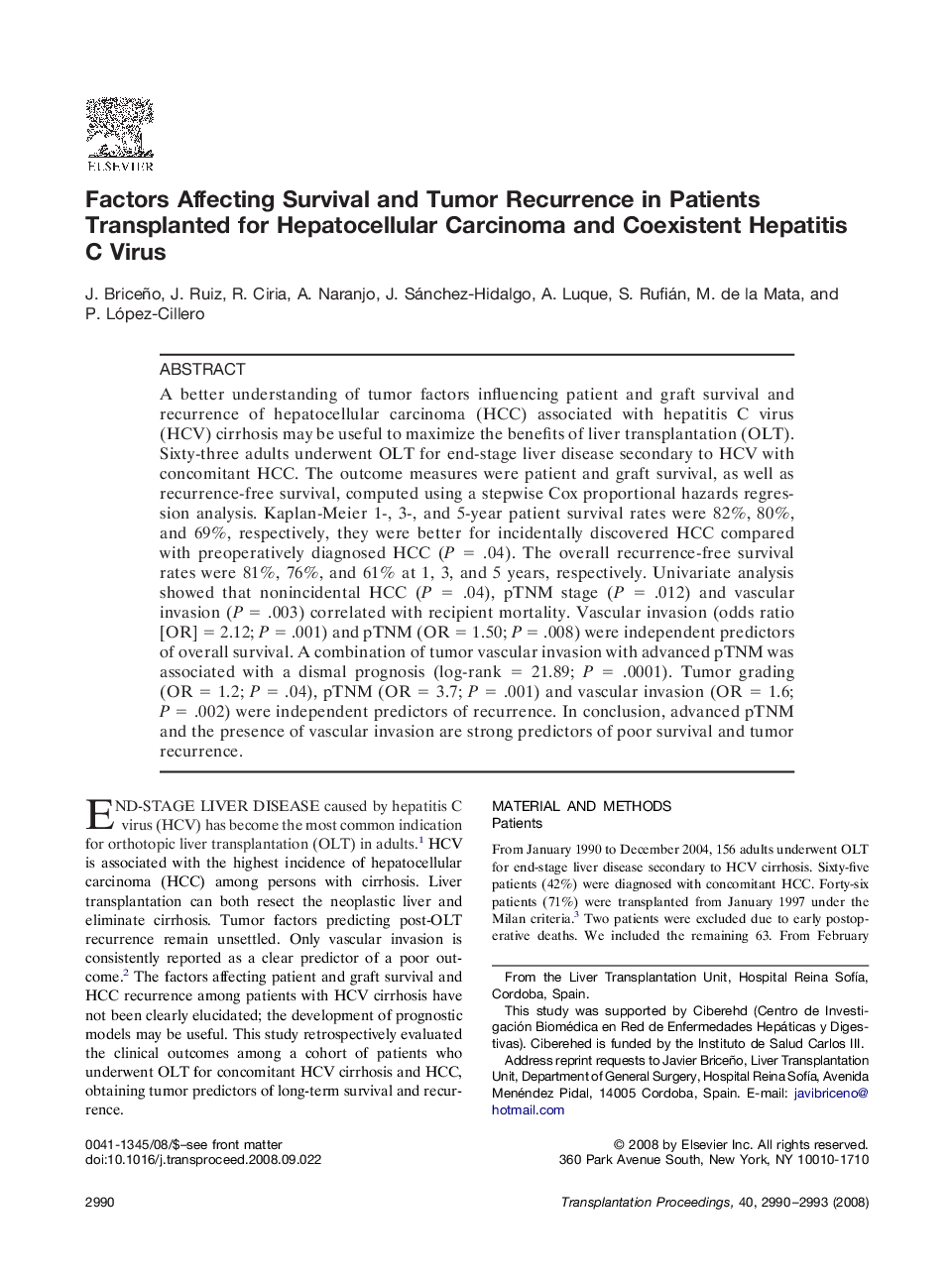| Article ID | Journal | Published Year | Pages | File Type |
|---|---|---|---|---|
| 4261328 | Transplantation Proceedings | 2008 | 4 Pages |
A better understanding of tumor factors influencing patient and graft survival and recurrence of hepatocellular carcinoma (HCC) associated with hepatitis C virus (HCV) cirrhosis may be useful to maximize the benefits of liver transplantation (OLT). Sixty-three adults underwent OLT for end-stage liver disease secondary to HCV with concomitant HCC. The outcome measures were patient and graft survival, as well as recurrence-free survival, computed using a stepwise Cox proportional hazards regression analysis. Kaplan-Meier 1-, 3-, and 5-year patient survival rates were 82%, 80%, and 69%, respectively, they were better for incidentally discovered HCC compared with preoperatively diagnosed HCC (P = .04). The overall recurrence-free survival rates were 81%, 76%, and 61% at 1, 3, and 5 years, respectively. Univariate analysis showed that nonincidental HCC (P = .04), pTNM stage (P = .012) and vascular invasion (P = .003) correlated with recipient mortality. Vascular invasion (odds ratio [OR] = 2.12; P = .001) and pTNM (OR = 1.50; P = .008) were independent predictors of overall survival. A combination of tumor vascular invasion with advanced pTNM was associated with a dismal prognosis (log-rank = 21.89; P = .0001). Tumor grading (OR = 1.2; P = .04), pTNM (OR = 3.7; P = .001) and vascular invasion (OR = 1.6; P = .002) were independent predictors of recurrence. In conclusion, advanced pTNM and the presence of vascular invasion are strong predictors of poor survival and tumor recurrence.
